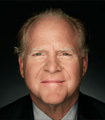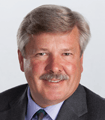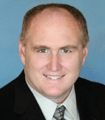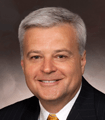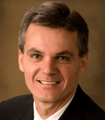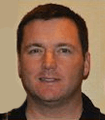2013 Mid-Year Executive Outlook
July 15, 2013
Summer is here and that means barbecues, beaches, and of course – our annual Mid-Year CEO Outlook. Sensing that the A/E industry and overall economy is gaining some momentum, we thought that we would check in with six leading CEOs across the country to gauge their thoughts on their company’s performance, where they are seeing promising opportunities for growth, and how they are unwinding this summer!
How has Array’s performance fared so far in 2013?
It will be very difficult for us to match our 2012 performance, so a great year for us in 2013 would be to have a flat year in 2013. In 2012 Array performed very well on a number of fronts. Our financial performance was very good, but just as important, we gained significant ground on leadership and ownership transition, brand awareness, digital footprint, and knowledge sharing both internally and externally, to name a few.
Given the firm’s focus on healthcare, in what services, building types, or models are you seeing promising opportunities for growth?
In the very recent past, expenditures on healthcare care broke down as follows: 31% on Hospital, 20% on Clinical Services, 5% on Nursing Home, and 3% on Home health care. However, this is rapidly changing. Soon, Clinical Services is going to surpass Hospital Care (if it hasn’t already). Nursing home and Home Health Care will continue to rise as Hospital Care expenditures will drop. The change for Hospital Care will continue to serve patients with higher acuity – specialty critical care suites will be required. Renovation of facilities will require fewer, but more critical beds.
When talking in terms of the types of services money is being spent on, 75% of the $2.7 Trillion (2012 numbers) is spent on people with chronic diseases (Heart Disease, Cancer, Diabetes, Obesity, Respiratory Diseases). This is one of the reasons why the shift in location is happening: the treatment for these chronic diseases is best when it’s convenient, integrated, and well-managed. These factors also contributed to the need for the Patient Protection and Affordable Care Act – before it, there was no real incentive/catalyst for change. These three factors for successful care delivery are best provided by ACOs, ambulatory care buildings organized around a Medical Home Model, or – at the greatest degree- at the patient’s home itself. A reorganization of the care delivery model is occurring now; health systems are retooling what they have and building new outpatient facilities to support other functions.
Broadly speaking, how is the design of healthcare facilities evolving due to industry regulation and reform initiatives?
I’d say the biggest evolution right now is the tension between the need for facilities that contribute to exemplary patient satisfaction scores (since these scores will be used to determine reimbursements in our “reformed” industry) and the need to be fiscally conservative until reform impacts are more settled/obvious.
Right now I think we’re seeing a lot of extremes (high cost and high value) and I expect the typical model to evolve more toward the middle as more market certainty is known. As far as a design technology goes, modular construction has the potential to become a real game changer – speeding both design (by having a predetermined set of templates to work from) and construction (which is where the most potential savings are from schedule reductions).
From your perspective, what’s the biggest challenge facing the architecture industry right now?
The U.S. economy is rapidly moving from a service-based to a knowledge-based economy. One of the key characteristics of the knowledge-based economy is separation of the production and consumption of the services. The use of technology is advancing that separation in the A/E industry.
Why is this is important to our practice? In a knowledge-based market design, practices will most likely thrive or fail by demonstrating mastery of sought-after services or an expertise. If you are not practicing in knowledge-based markets you will be left to compete in fee-based markets which we all know is a race to the bottom, and a fast race at that. Fee-based markets result in scarcity of resources limiting our ability to attract and retain talent, and to innovate at levels that create value for both us and our clients. But they also permit easy commoditization of our services by our clients. All of this will be a death blow to many A/E firms. Firms that create, capture, and share their organization’s knowledge and expertise as part of their overall business strategy should be successful in transitioning to the new knowledge-based economy. While this link between knowledge management and business strategy is often talked about, it is widely ignored in practice.
Have you had to change your leadership style over the last few years due to the soft economy?
No, not really. Array has a fairly transparent culture so we share the good, the bad, and the ugly with staff frequently. Transparency is a powerful unifier. So when we share with our team and acknowledge to them our strengths we need to leverage and the weaknesses that we need to work on, we begin to build trust. And in the worst of times it is this trust that staff has in their leaders that will facilitate and drive higher levels of performance.
What’s on your summer reading list?
Blue Ocean Strategy by W. Chan Kim and Renee Mauborgne and How Successful People Lead by John Maxwell.
How has Shive-Hattery’s performance fared so far in 2013?
After having record results for 6 of the last 7 years, I wondered whether we could sustain that performance and whether 2013 would yield yet another record for us. We saw our backlog fall off during the 4th quarter of 2012. It has rebounded nicely in 2013, however, it also created some pockets of under-utilized staff in some of our offices in the first quarter. As a result, 2013 has started off a little slower than last year, but still producing profitable results above our goals in many areas. The rest of the year looks promising, but whether we have another record or not, only time will tell.
In what market or service areas are you seeing promising opportunities for growth?
One of our quickest growing markets lately has been a rebound of the commercial work. This market sector includes projects in the retail and interior workplace as well. Of course it’s rebounding out of the cellar of the last recession, but rebounding nonetheless. As far as opportunities for growth, I believe our energy-related services have the greatest potential. There are a lot of opportunities out there in most of our major markets to do more in the energy arena. Most of our other markets (education, healthcare, industry, government, and telecom) are steady and so far have been tracking fairly close to our forecasted revenue projections.
Last year you acquired another architecture firm, Design Organization. What was the rationale behind that and how has it worked out?
We’re not overly aggressive when it comes to acquisitions, but have been looking for opportunities for growth when they make sense. We had not been targeting a specific region or type of firm particularly. The most important aspect we try to look for is a solid cultural fit.
When we started having conversations with Design Organization, it became very apparent to us that their firm shared the same business and people values as Shive-Hattery. The other attractive features that Design Organization brought to the table were a new geographic area that we could potentially expand our engineering services to, a deeper level of experience in higher education design, a new service area in Workplace Interiors, and just a bunch of “good folks.” I have to say that it has worked out very well so far and both S-H and DO are excited about the possibilities that could unfold. But our initial impressions about a good cultural fit, I believe, have been the key to the success of the transition.
You assumed the role of President in 2012. Did you have to adapt your leadership style to this new position?
Well, it’s certainly a different job than being a team leader in a design office. Instead of selling work and delivering projects, my focus tends to be on the bigger picture, what the future holds for S-H, and positioning ourselves well in the marketplace. But, I don’t think my leadership style has had to adapt any new aspects. I continue to reach out to others to gather input when making decisions. I strongly believe in our coaching/mentoring approach, our leadership development program, and successful succession planning. My leadership style has worked well in the past, and I hope it will serve me well moving forward.
Broadly speaking, the country and A/E industry is still suffering from a jobless recovery. Is Shive-Hattery hiring?
Yes, we are! We’ve been very fortunate through the recession and the slow recovery. Our need to continue to identify and recruit top talent in our key positions never seems to end. There truly is a war on talent out there. We consistently have had 10 to 20 positions open over the last couple years. Our number of full-time staff has never been higher and we looking to add some more.
What’s on your summer reading list?
I’m currently reading The Advantage by Patrick Lencioni as part of our Leadership Development Program. I just completed Biomimicry by Janine Benyus and for fun I just completed D-Day by Stephen Ambrose.
How has HELIX’s performance fared so far in 2013?
HELIX’s financial performance in 2013 has been good, albeit a little shy of our goals. Our year-to-date profits are in the double digits as a percent of net service revenues, but that six-month average masks significant month-to-month volatility, with profits at or above 20% in some months and in the single digits for others. With regard to our internal goals, such as recruiting to fill key positions and improving the development of our next tier of company leaders, we are seeing more steady progress.
In what market or service areas are you seeing promising opportunities for growth?
Renewable energy continues to provide significant opportunities for environmental consulting, even if the initial rush of desert solar projects is wrapping up. HELIX is seeing substantially more activity in the private development market, including residential and commercial developments. A lot of properties that went through the entitlement process prior to the recession are resurfacing with different development plans. What worked in 2008 won’t sell in 2014. This creates opportunities for environmental consultants who can minimize the work necessary to guide the proposed new development plans back through the entitlement process.
What are the biggest concerns your clients face today?
Uncertainty tops the list. I think that everyone, from clients to competitors to subconsultants, remains concerned about the strength and pace of the economic recovery. Within the markets we serve, our clients are concerned about cost and the time required to complete the environmental compliance process. Local governments have tighter budgets; our water district clients have lower water sales and less revenue (as a result of water conservation efforts); and our private clients are facing a much different cost environment than they were pre-recession. And despite calls for streamlining the environmental compliance process to help boost economic activity, we haven’t seen that happen.
What advice would you offer aspiring environmental professionals today?
Learn to manage and sell. While there will always be career opportunities for environmental technical experts, far greater career opportunities exist for technical experts who also can generate work and manage people and projects. Business development is especially key, and it is important to start building your network now. Attend local professional events such as luncheons, and position yourself to attend industry conferences. Many companies will sponsor conference attendance if you will be presenting a paper. If you’re terrified of public speaking and loathe the idea of making a presentation or leading an interview for a new project, start going to Toastmasters now.
Have you had to change your leadership style over the last few years due to the soft economy?
I was promoted to CEO of HELIX in June 2008, when the economic wheels were just coming off. One way in which this affected my leadership style was that there was a much stronger focus on business development as CEO than I had realized before taking the job. When you’re laying off employees, as we had to in 2008 and early 2009, succeeding in business development correlates directly with being able to retain your employees.
One other way in which the soft economy affected my leadership style was that it forced me, and the rest of HELIX’s executive team, to improve communications about the financial performance of the company. We started holding quarterly all-hands company meetings, in large part so that our executive team could convey on a regular basis what we were doing to ensure the fiscal health of the firm. Even though those dark days seem to be behind us, our practice of frequent and open communication remains an important element of HELIX’s leadership.
What are your plans this summer for rest and relaxation?
We took a two-week family trip to New York and New Jersey in June, with time split between Mohonk Mountain House (located overlooking its private lake in the Hudson River Valley), New York City, and Cape May on the Jersey Shore. This trip provided a great combination of beautiful natural scenery, intense urban activities, and fun at the beach. As a bonus, our nine-year-old son and aspiring inventor got to see the laboratories of Thomas Edison in West Orange, New Jersey.
How has Soltesz’s performance fared so far in 2013?
To date, 2013 has followed a similar pattern as 2010, 2011, and 2012. We started the year extremely strong, saw a soft patch in the spring, and it appears to be picking up once again through the summer. In 2012, we had our strongest year since 2006 in terms of revenue growth and profitability.
In what market or service areas are you seeing promising opportunities for growth?
We are seeing tremendous demand in the residential market, similar to 2003 right before the major ramp-up. The for-rent market has been strong and we are seeing that substituted by extreme demand in residential for-sale products, including condominiums.
Your company recently launched a new name and brand campaign. What was the rationale behind that?
Our company launch of our new brand has been extremely successful. Four years ago, we initiated an ambitious diversification program – expanding into new market sectors and geographic regions. With our continued success with repeat clients and our expanded market reach, the firm is stronger than ever. The time was optimal for rebranding.
Your company’s strengths have traditionally been in land development activities. How has that market changed since the 2000s?
We have traditionally had tremendous success and experience in residential land development. We have, however, tried to expand our site civil expertise to a wider variety of clients. These include healthcare, educational facilities (both K-12 and higher education), and municipal facilities. In addition, we have also been fortunate to have had great success in stormwater management water quality initiatives, which have been initiated through the Chesapeake Bay Act and the MS4 permit program.
What advice would you give aspiring engineering professionals today?
Constant training and a never ending desire to improve one’s skill sets is my advice. Here at our company, we have extensive training programs in both professional development and technical training. We believe that well-rounded professionals in the engineering field should possess both types of skill sets and that is why we have invested considerable time, effort, and capital into these training programs.
What’s on your summer reading list?
My reading list over the summer will include my traditional year-round extensive reading of Bloomberg and CNBC articles on the economy. This summer I will also be reading It’s Different This Time, written by two local University of Maryland professors. In addition, my close high school friend, former Congressman Robert Ney, finished a book called Sideswiped regarding his career on Capitol Hill and the scandals in which he was caught up.
How has Progressive AE’s performance fared so far in 2013?
Before the “Great Recession,” we experienced several consecutive years of firm record financial performance. We now fondly refer to 2009, 2010, and 2011 as a holiday (in growth and earnings), but no vacation! In 2012 we celebrated our 50th year in business and a return to record financial performance, and at period 7 of fiscal 2013 we are ahead of plan and expecting to close another record year.
In what market or service areas are you seeing promising opportunities for growth?
We have seen a strong rebound in most all of our markets, with what appears to be significant pent-up demand. Regionally, the Midwest seems to be doing well with a manufacturing rebound, driven in-part by a strengthened domestic auto market and related businesses (manufacturing, suppliers, retail dealerships), and in-part by what may be a growing trend to “on-shoring” of supply chains. Healthcare reforms are driving consolidation in the healthcare industry resulting in projects to create operational efficiency and care integration. Multi-family housing and corporate commercial office have been strong and continue to show promise.
Last year you acquired another Michigan firm, Design Plus. What was the rationale behind that and how has it worked out?
The strategic rational was to deepen expertise in a couple of specific markets (multi-family and student housing & student dining), add senior client leadership capacity necessary to support growth, cross-sell engineering and non-traditional services into acquired clients and markets, and accelerate Revit and BIM deployment. The integration has gone very well, with high morale, good cultural fit, 100% retention of clients and staff, and continued growth.
From your perspective, what’s the biggest challenge facing the A/E industry right now?
Fees – the industry continues to be too quick to drop fees in an effort to win the work. Perhaps fueled by the past recession, perhaps by the growth in the number of new sole proprietors – but we need to be very clear about the value we deliver and be confident and firm in what appropriate compensation is. I find in some cases we are too quick to want to please, perhaps even negotiating against ourselves.
Broadly speaking, the country and A/E industry is still suffering from a jobless recovery. Is Progressive AE hiring?
Yes – in addition to the acquisition we organically grew by over 20% last year. Currently there are nine full-time positions posted on our website.
What are your plans this summer for rest and relaxation?
My 19-year-old son and I both received our pilots’ license last fall and bought a light sport aircraft. I enjoy flying because it provides a very different perspective of our world while demanding my full attention and presence-of-mind – which is a nice vacation from the business.
How has SRP’s performance fared so far in 2013?
SRP Environmental’s revenue growth is ahead of last year on a YTD comparison. We have continued to expand our geographic footprint and are successfully expanding our operations both organically and through acquisition. Our team is committed to providing superior services to our current client base and expanding our service offerings in strategic markets. Additionally, we anticipate that our business plan will provide a solid platform for future growth as demand for Environmental, Health, and Safety services continues to grow in all of our market segments.
In what market or service areas are you seeing promising opportunities for growth?
We continue to see very strong growth opportunities in Oil & Gas, Agriculture, Manufacturing, Health Care and Private/Public property development and/or renovation. Our Environmental Compliance and Assessment/Remediation group has been experiencing steady demand for Air Permits, Environmental Audits, Site assessment & Remediation as well NPDES and SPCC compliance. Furthermore, we have experienced rapid growth within our Industrial Hygiene, Safety Training & Safety Consulting sectors. Our Catastrophe Response group has continued to expand its client and geographic base and is currently making preparations to prevent or limit the impact of the upcoming storm season as it relates to client business interruption from hurricanes, floods etc.
You acquired a safety consulting and training firm in Colorado last year. What did that transaction accomplish for SRP?
Our Colorado acquisition accomplished several key objectives critical to future growth and expansion. First, we inherited an incredibly talented and motivated team as Tara and Ivan Steinke had built a very strong client base within the mountain region. The acquisition allowed us to add to our client base and take advantage of cross selling opportunities within the Industrial Hygiene and Environmental Services sector. Secondly, we were able to obtain a strong degree of synergy as our Colorado office is now able to serve all of our existing clients in that area. Having a physical presence in the Rocky Mountain region has enabled us to be more responsive to our clients, increased our resource allocation flexibility and allowed us to capitalize on economic trends across several unique markets.
SRP has made the Inc 5000 and has been growing rapidly while adding new managerial talent, systems, and processes. What’s the key to managing all of that growth effectively?
I believe the most important key to sustaining rapid growth, while maintaining superior quality service is a leader’s ability to surround themselves with talented people that are passionate about what they do. A company can’t grow and adjust to client demands that are fluid and constantly changing without a dynamic team of visionaries. Additionally, leveraging a firm’s strengths and knowing its weakness is also vital to the sustained success of a rapidly growing firm. The most successful firms will be those that disrupt not only the strategic markets they serve but also those that are willing to disrupt their own culture and change in response to client and economic demands.
What are the biggest concerns your clients face today?
Many of our clients are concerned with a rapidly changing regulatory environment that tends to overburden the ability of a business to thrive within its industry. Clients are frustrated with a growing and complex array of regulations that put them at an economic disadvantage and divert their attention away from the primary business focus. That is why SRP Environmental strives to navigate our clients through the regulatory process with effective expediency so that they can focus on growing their business while maintaining compliance with applicable federal, state, and local regulations.
What’s on your summer reading list?
I tend to read a lot of financial magazines including Fortune Small Business and Inc. Magazine. I am also reading June Jewell’s Find The Lost Dollars and look forward to the release of John Grisham’s next novel.
